Cats and dogs have very distinct tendencies, traits and personalities. So is it impossible for these furry friends to co-exist in a home or even become friends?
Lovers of both pets can indeed enjoy the best of both under one roof. However, like all relationships, establishing and nurturing a positive co-existence requires work and there are several elements to consider to maintain a dog and cat friendly home.
Speaking to Newsweek, Zazie Todd—the author of Wag: The Science of Making Your Dog Happy and the forthcoming book Purr: The Science of Making Your Cat Happy, which is out in spring 2022—said good early life experiences are key and cats will get along better with dogs if they are introduced as kittens. The early part of a kitten’s life, from when they are two to around seven weeks old, is a sensitive period for socialization.
“A wide range of positive experiences in this time helps them grow up to be friendly, confident, adult cats. So if they have positive experiences with dogs in their first home (with the breeder) and then in your home too while they are still kittens, that’s ideal,” Todd said.
Speaking to Newsweek, Pam Johnson-Bennett, the author of several books on cat behavior and training who is the former vice president of the International Association of Animal Behavior Consultants, said in addition to socialization and positive exposure to other animals, the personality and characteristics of the specific dog breed as well as the age and activity levels of both pets play vital roles in the introduction.
The success of the introduction will depend on the dog parent’s control over the dog in terms of training and how safe the cat feels, she said. “If you hope to have these two animals become life-long friends, take the time to do a safe, gradual and positive introduction.
“Take time to make complementary matches to ensure safety for all and increase the chances of success. Take all the information you know about your resident pet to assist you in determining whether a companion would be beneficial,” Johnson-Bennett said.
Todd said slow and gradual introductions are important, starting with smell before moving onto sight of the dog before short, safe introductions are initiated in the same room.
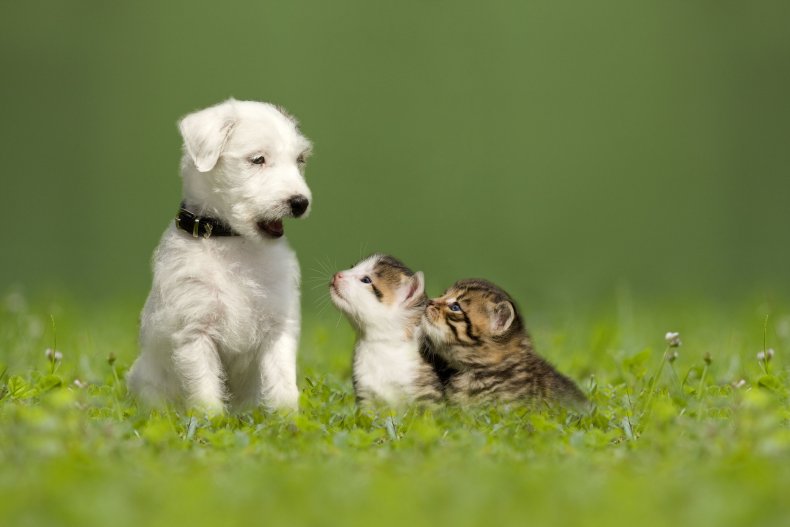
LEOBA VIA ISTOCK / GETTY IMAGES PLUS
Here we take a closer look at some of the mistakes to avoid and what not to do when introducing cats and dogs.
Don’t Let Dogs Have Access to Cat Areas
One of the most crucial factors for establishing a good cat-dog relationship is how comfortable and safe the cat feels, Todd told Newsweek.
Owners can help a cat feel safe by making sure the cat has a space to go to that the dog can’t reach, such areas that are high up, like cat trees or shelves, and hiding places that are only large enough for the cat to access, she added.
It can be helpful to make these spaces easier for cats to reach, such as pulling out chairs from the dining table or pulling a sofa slightly off the wall so only the cat can get through the gap. Pet gates can be used to keep dogs out of certain parts of the house and some pet gates come with a cat door, Todd said.
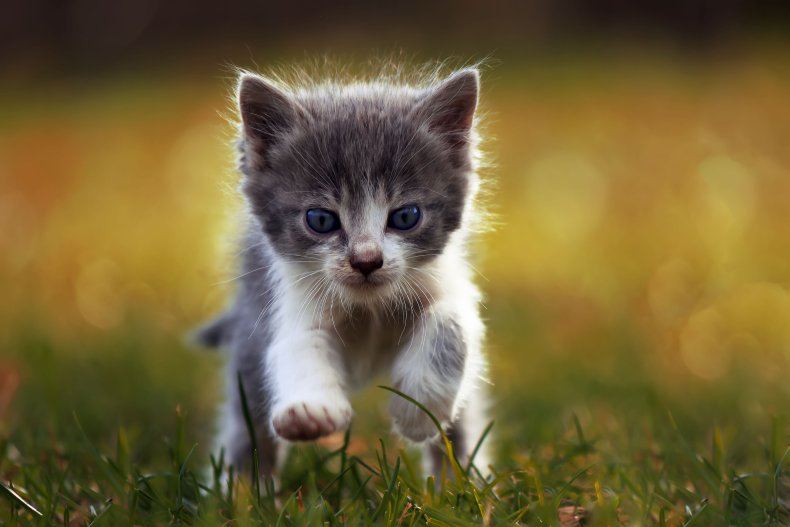
MASTER_ACE VIA ISTOCK / GETTY IMAGES PLUS
Don’t Keep a Cat in the Carrier for First Meeting
Cats hate carriers in general and putting them in one certainly won’t help their first introduction to dogs, as they’ll have no escape route.
Todd told Newsweek: “Whatever you do, don’t put the cat in their carrier for these first meetings, because it means they can’t get away if they feel unsafe when the dog comes up to sniff the carrier.” However, it is sensible to put the dog behind a pet gate when you are doing visual introductions.
This degree of separation during visual introductions allows them to meet without the risk of injury. Once they appear to be calm in this separated setting, owners can try bringing them together in the same room, the American Kennel Club (AKC) says.
A neutral location, rather than either the dog’s or cat’s safe space, should be chosen for their meeting. The cat should be allowed to wander free so they can escape if they feel the need, while the dog should be on a leash so you can control their movements and keep them from chasing the cat (more on chasing further below).
Todd also said research shows that it can also help if the cat is in the home first, before the dog arrives, for the introduction.

SERHII SHLEIHEL VIA ISTOCK / GETTY IMAGES PLUS
Don’t Let the Dog Chase the Cat
Dogs play by chasing and when a cat runs off out of fear, the dog may take it as a playful response and continue the chase. This breakdown of communication can raise fear levels and defensive behavior in the cat, Johnson-Bennett explained.
“It’s up to the pet parent to help the dog learn the cat’s language,” Johnson-Bennett told Newsweek.
For some dogs, especially those with a strong drive to chase small outdoor wildlife or ones that have chased outdoor cats, getting introduced to a cat is more challenging and may pose an injury risk, Johnson-Bennett said, adding: “If an animal doesn’t feel safe, the introduction will not have a good outcome.”
To keep chase instincts at bay and promote a calm demeanor, the AKC recommends letting your dog know how you expect them to behave when the cat is present.
For example, owners can tell their dog to sit or lie down in the presence of the cat to reinforce calm behavior and give them a treat for this action.
Giving your dog a treat in this situation not only reinforces calm but also teaches it that the cat is a cue to look to you for a reward, the AKC explains.
Todd said some dogs, especially ones with a tendency to chase and kill small animals, may see cats as food, so they are simply not safe around cats.
Some pooches have other tendencies that cats don’t like, such as the way herding dogs can stare.
“Cats don’t like to be stared at. Having said that, some herding dogs get on really well with cats, so it depends on the individuals,” Todd noted.
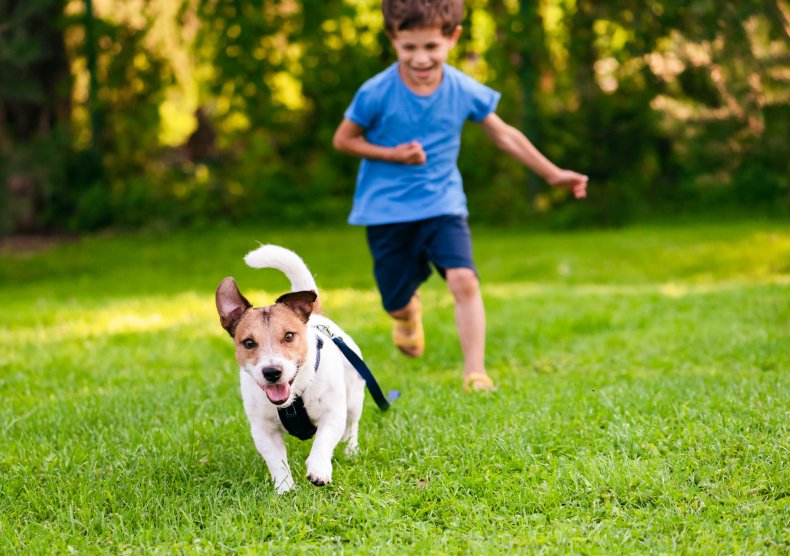
ALEXEI_TM VIA ISTOCK / GETTY IMAGES PLUS
Don’t Put Their Food in the Same Space
It’s very important that the dog and cat are given their food and water in separate spaces, to be sure the cat doesn’t have to compete with the dog for its resources, Todd said.
The cat should be fed separately from the dog and be sure the cat gets some quality time with you. Owners should consider keeping the dog out of the room when you’re spending time with the cat, especially when you’re playing with them using a wand, to avoid triggering the dog’s urge to chase, Todd added.
“They [cats] also shouldn’t have to go past the dog to get access to their litter tray,” Todd told Newsweek.

NILS JACOBI VIA ISTOCK / GETTY IMAGES PLUS
Don’t Have Prolonged Introductions
Meetings between the dog and cat should be short and sweet. These brief interactions can be spread throughout the day for at least a week, the AKC advises.
Offering treats to both pets during these meetings can help build positive associations with each other. “Consider reserving a particularly delicious treat for just these sessions so your pets will look forward to seeing each other,” the AKC says.
If both seem relaxed, then allow them to nudge a little closer to each other, but still keeping the interactions short and providing plenty of calm, positive experiences and human interactions when the pets are present.
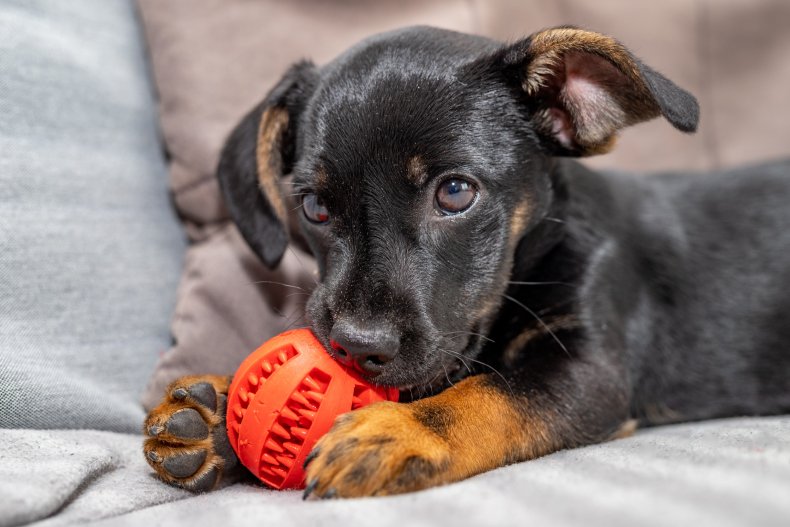
PIOTR WYTRAZEK VIA ISTOCK / GETTY IMAGES PLUS
Avoid Crisis Management
If the interaction starts to appear tense, avoid the urge to step in immediately to take one of the pets away, advises International Cat Care.
Actions such as swooping in and grabbing either the cat or dog in a bid to diffuse the tension “will elevate arousal levels and could lead to a problematic experience which may be detrimental to future relations,” the charity explains.
Once you anticipate the pets will be able to share a space comfortably, the barriers can come down for a while. But this should only happen following multiple and gradual interactive sessions between the cat and dog that indicate it is very likely that they will be fine together in the same space.
Luring the pets away from each with food or toys will create space between them, if it’s needed at any point during their meeting.
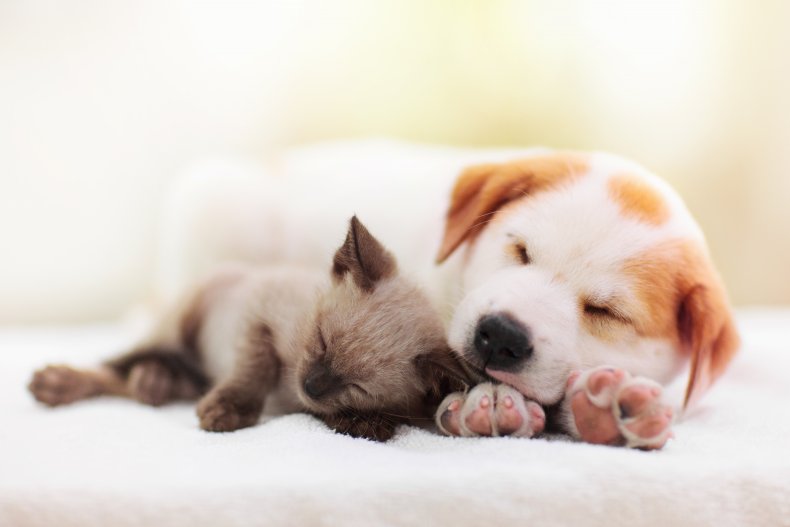
FAMVELD VIA ISTOCK / GETTY IMAGES PLUS
…But Don’t Leave Them Unsupervised
Introductions should always be conducted under direct supervision, which entails actively monitoring and preventing any problems through positive distractions, such as luring the pets with food or toys.
International Cat Care says: “Supervise at all times and be constantly vigilant for any outward signs of emotional arousal such as fear or excitement, changes in body language or posture.”
When in doubt that things may become intense, always err on the side of caution and end the meeting while both pets appear to be relaxed. “Don’t take a chance and allow it to go wrong,” warns the charity.
As the dog and cat appear to be more calm and comfortable around each other, owners should continue to praise and reward them for the positive interactions so that these behaviors become ingrained.
But “until you’re sure of the outcome, which could take a few weeks to a few months, don’t leave them together on their own,” the AKC says.
Even when your pets are at a stage where they can co-exist without supervision, owners still need to take precautionary measures for the safety of both pets, such as keeping the cat’s nails trimmed or covered in nail caps to prevent injury to your dog.
Cats should also have a permanent dog-free space in the house using baby gates or a cat door, the AKC says.
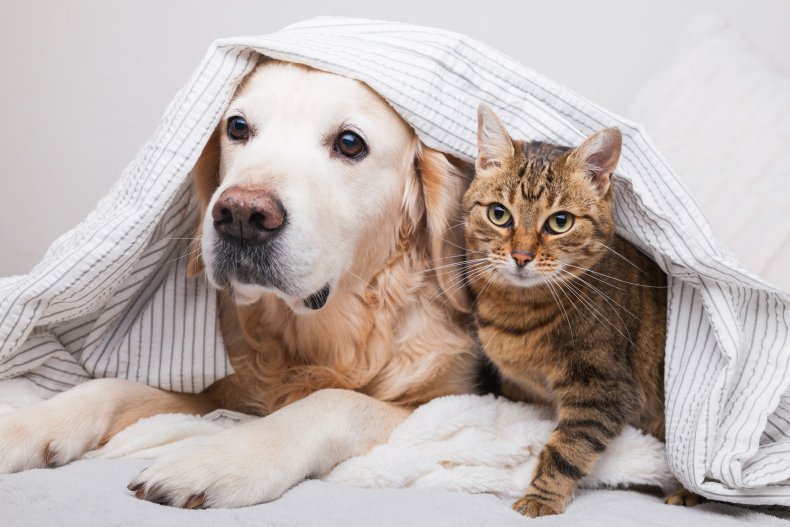
PRYSTAI VIA ISTOCK / GETTY IMAGES PLUS



